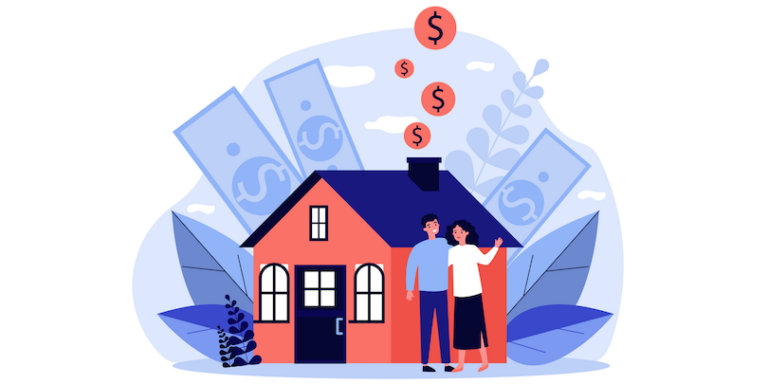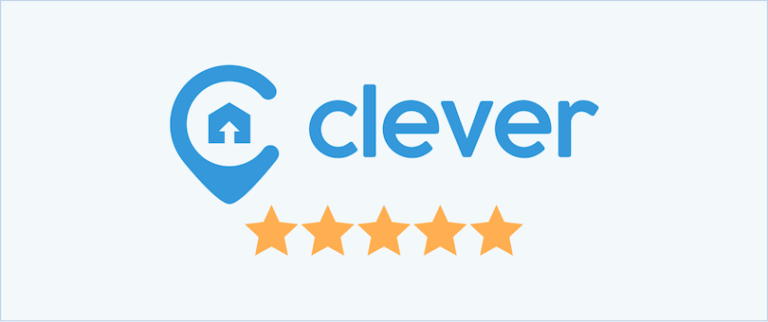What you should know…
- The average Black household in America has less than one-tenth the wealth of a typical white household.[1]
- Our analysis found that the racial wealth gap is reinforced by disparities in home prices: houses in predominantly Black zip codes are worth less than half as much as homes in predominantly white neighborhoods.
- Closing the racial wealth gap would benefit not only individual citizens and their communities but also the national economy at large, adding an estimated $1 trillion to $1.5 trillion to the U.S. economy by 2028.[2]
Table of Contents
- Key Insights
- Defining the Racial Wealth Gap
- Significant Home Value Disparities Between Black and White Zip Codes
- The 2008 Financial Crisis Exacerbated the Racial Wealth Gap
- Neighborhood Revitalization Leads to Economic Growth
- What You Can Do About The Racial Wealth Gap
- Methodology
Across the U.S., many Americans share the same dreams of security, stability, and prosperity — for themselves and for their families.
Yet, not all Americans have equal opportunities to realize these goals.
The United States’ history of discrimination makes it extremely difficult for Black families to amass generational wealth at the rate white families can. In fact, the typical Black family has less than one-tenth the household wealth of a typical white family.
Americans' household wealth is concentrated in their retirement accounts and home equity. An August 2020 U.S. Census report found that retirement savings account for 32.8% of household wealth, while home equity accounts for 28.9%.[3]
The racial wealth gap impacts the housing market as well. Lenders perceive borrowers to carry more risk if they have less money, so Black families are more likely to be denied mortgages. White Americans are 1.7 times more likely to own a home than Black Americans (74.5% versus 44.1%, respectively).
Worst of all, our analysis found a negative correlation between home prices and the percentage of Black residents living in any given zip code. Houses in majority Black neighborhoods are valued at less than half as much as neighborhoods where less than 1% of the residents are Black. In some cities, houses in majority non-Black neighborhoods are valued over 600% more than Black neighborhoods.
To better understand the toll this takes on the American economy, we analyzed publicly available national housing data from Realtor.com, Zillow, and the U.S. Census.
We found that the racial wealth gap hurts not only Black people but also all Americans. According to economic models by McKinsey Institute, closing the racial wealth gap would to add $1 trillion to $1.5 trillion by 2028.[2]
Increasing Black homeownership and revitalizing predominantly Black communities has the potential to transform the lives of individuals — and the nation’s economy at large.
Clever is proud to partner with Dream Builders 4 Equity, a 501(c)3 organization that is creating new opportunities for home ownership, jobs for youth and minority contractors, and public dialogue about community needs in St. Louis.
Dream Builders 4 Equity’s innovative model provides a roadmap for how communities across the nation can take meaningful action to close the racial wealth gap. You can learn more about the nonprofit's mission in this video and donate to support Dream Builders 4 Equity on GoFundMe:
Key Insights
The Impact of the Racial Wealth Gap
- The typical Black family has approximately $12,780 in household wealth, compared to $139,300 for white families.[1]
- Our analysis found that homes in predominantly white zip codes command approximately $193 per square foot, compared to around $115 in predominantly Black zip codes.
- With each 1% increase in the Black proportion of the population in a particular zip code, home values decrease by approximately $2,581.
- The average median listing price is around $167,508 in predominantly Black metro areas — compared to $355,000 in neighborhoods where the percentage of Black residents is under 1%.
- Inequity worsened after the 2008 housing crisis: In 2007, the difference between Black-owned and white-owned average home prices was about $57,668 — a gap that nearly doubled to $94,489 by 2020.
Benefits of Closing the Racial Wealth Gap
- Equalizing homeownership rates alone would decrease the racial wealth gap by more than $40,000.
- Revitalizing Black neighborhoods can lead to a healthier economy: Every 10% increase in total housing market wealth translates to $147 billion in additional consumer spending.
- Building just 100 new low-income housing units could immediately create 80 jobs, plus an additional 72 jobs supported by ripple effects and new residents.
Defining the Racial Wealth Gap
Black Americans face systemic barriers — including disparities in pay, job opportunities, and interest rates — that curtail their ability to build wealth at the same rate as white Americans.
The typical Black family has approximately $12,780 in household wealth, compared to $139,300 for white families, per recent U.S. Census data.[1]
When Black applicants are approved for a mortgage, they tend to be charged higher interest rates than white borrowers. In 2015, researchers found that Black borrowers pay 29 basis points more than similar white borrowers[4] — a gap that is most pronounced for Black women, who are likely to be charged 57.36 basis points more than white women.
Collectively, these higher interest rates cost about $765 million annually[5] — money that could be redirected into paying down debt, saving, or spending in Black Americans’ local economies.
As a result, on average, Black homeowners also spend more than white homeowners — nearly one-quarter of their income (24%) — on housing costs. This varies based on location. For example, residents of majority Black zip codes in Canton-Massillon, Ohio, spend 38% of their income on housing on average, which is 107% more than residents of non-majority Black neighborhoods.
Equalizing these factors would also have an immediate, direct impact on Black Americans’ quality of life. For example, in the St. Louis metro area, Black homeowners spend about 23% of their paycheck on their home, compared to just 18% among white homeowners.
Homes in Predominantly Black Zip Codes Are Worth Half As Much as White Zip Codes
The racial wealth gap is demonstrably real and has cascading effects, particularly in the real estate market. We analyzed average home prices across 222 U.S. metros in 2020 and found strong correlation between race and property values.
On average, property values in predominantly Black zip codes are less than half those in predominantly white zip codes. In fact, with each 1% increase in the Black proportion of the population, home values decrease by approximately $2,581.
These discrepancies persist even when the analysis is controlled by home size. We found that homes in predominantly white zip codes command approximately $193 per square foot, compared to around $115 per square foot in predominantly Black zip codes.
If all other factors are equal, a 2,000-square-foot home would price at $386,080 in a predominantly white zip code — but only $229,900 in a predominantly Black one.
This limits the proceeds Black homeowners stand to gain from selling their homes. We found that in predominantly Black metro areas, the average median listing price is around $167,508 — compared to $355,000 in neighborhoods where the percentage of Black residents is under 1%.
In other words, white neighborhoods are valued nearly 60% more than Black neighborhoods.
We found that across the United States, 38 metropolitan areas have property value disparities of 100% or more — with several exceeding 500%.
The top 15 metropolitan areas with the greatest property value disparities between predominantly Black and non-Black zip codes are:
- Flint, MI: 645%
- Kansas City, MO-KS: 516%
- Toledo, OH: 485%
- Miami-Fort Lauderdale-West Palm Beach, FL: 478%
- Bridgeport-Stamford-Norwalk, CT: 424%
- Milwaukee-Waukesha-West Allis, WI: 382%
- Buffalo-Cheektowaga-Niagara Falls, NY: 368%
- Philadelphia-Camden-Wilmington, PA-NJ-DE-MD: 348%
- Rochester, NY: 321%
- Salisbury, MD-DE: 317%
Below, we've broken down a list of more than 60 metropolitan areas by the typical property values in predominantly Black and non-Black zip codes, ranked by their percent differences.
Ranking Metro Areas by Property Value Disparities
This pattern isn’t simply an artifact of averages — the median listing price for homes decreases as the percentage of the Black population within the zip code increases.
Homeownership should be a wealth-generating tool for all Americans. Instead of incentivizing homeowners to abandon or avoid predominantly Black zip codes, closing the racial wealth gap will require intentional investments in the neighborhoods that are currently most disadvantaged.
With time, neighborhood revitalization can raise property values for current residents and attract new businesses and job opportunities that can fuel further economic growth.
The 2008 Financial Crisis Exacerbated the Racial Wealth Gap
The 2008 financial crisis exacerbated the racial wealth gap, and more than a decade later, Black communities have still not recovered to the same degree as white ones.
In 2007, the difference between Black and white average home prices was about $57,668 — a gap that nearly doubled to $94,489 by 2020.
Black homeowners’ home values depreciated after the crash,[6] even when Black borrowers earned more than 120% of the area's median income. By contrast, white-owned home values appreciated over that same time period, even when the owner earned less than 80% of the area’s median income.
Sadly, many Black families who bought homes in 2004 are still underwater on their mortgages, while families living in non-Black majority neighborhoods have seen significant increases in their home’s equity.
Changes in Midwestern Home Values from 2004 to 2020
| Metro Area | Majority Black | Non-Black Majority |
|---|---|---|
| Detroit-Warren-Dearborn, MI | $71,423 decrease | $28,100 increase |
| Cleveland-Elyria, OH | $45,928 decrease | $25,541 increase |
| St. Louis, MO-IL | $48,094 decrease | $21,887 increase |
| Milwaukee-Waukesha-West Allis, WI | $9,307 increase | $63,881 increase |
| Memphis, TN-MS-AR | $5,154 increase | $36,425 increase |
| Cincinnati, OH-KY-IN | $6,967 decrease | $32,932 increase |
| Chicago-Naperville-Elgin, IL-IN-WI | $14,225 decrease | $15,212 increase |
While this pattern holds true nationwide, it is especially pronounced in the Midwest, where home values are even more disparate than they were before the financial crisis — despite reaching parity in 2008.
In 2004, homes in Midwestern non-Black majority zip codes were worth $76,141 more than homes in majority Black zip codes — but by 2020, that gap had widened to $115,934.
Between 2004 and 2020, homes decreased by an average of $6,214 in Black majority neighborhoods, yet homes increased by an average of $33,579 in non-Black majority neighborhoods.
This holds true across large metropolitan areas across the U.S., where home values in predominantly Black zip codes have yet to recover to pre-crash levels. By contrast, those in predominantly white neighborhoods have exceeded pre-crash levels.
Additionally, the proportion of homeowners who are seriously underwater on their mortgages in a given zip code increases sharply with an increase in the percentage of Black residents.
Homeowners in predominantly Black communities are twice as likely[7] to be seriously underwater on their mortgage (20%) than those in white neighborhoods (9.9%).
As home prices soared throughout 2020, these patterns became more entrenched, exacerbating the wealth gap as predominantly white neighborhoods became increasingly valuable.[8]
Neighborhood Revitalization Doesn’t Just Impact Residents — It Strengthens the Local, Regional, and National Economies
The benefits of revitalizing Black neighborhoods and increasing Black homeownership go far beyond those individuals’ lives. A 2020 study found that every 10% increase in total housing market wealth translates to $147 billion in additional consumer spending.[9]
Equalizing homeownership rates alone would decrease the racial wealth gap by more than $40,000[10] — money Black families could reinvest in their communities and financial futures.
When banks appraise homes, they consider comparable homes nearby, which further suppresses home values in Black neighborhoods. Today, the racial composition of a neighborhood is a stronger predictor of home price appraisal now than it was in 1980.[11]
Increasing Black homeownership through affordable housing can bring new businesses to formerly depressed areas — lifting property values and increasing economic opportunities over time.
Nearly 67% of companies with more than 100 employees believe that a shortage of affordable homes has a negative impact on their ability to retain employees, according to the National Association of Home Builders.[12]
As businesses are drawn in by affordable housing, they directly create new jobs, which in turn increases disposable income and consumer spending.[13]
In fact, homeownership itself accounts for a large share of employment nationally.[14] Research by the National Association of Home Builders found that building just 100 new low-income housing units could immediately create 80 jobs, plus an additional 42 jobs supported by ripple effects. As residents move in, 30 more jobs could be created from increased consumer activity in the area.[12]
When homeownership increases in a community, it can lead to better financial outcomes for both specific neighborhoods and their entire surrounding regions. Financial institutions may increase capital for areas with more employment, unlocking new opportunities for consumer spending, new businesses, and local jobs.[9]
What You Can Do About The Racial Wealth Gap
Dream Builders 4 Equity is a 501(c)3 organization that provides youth employment, training, & mentorship.
The program uses four innovative steps that support long-term neighborhood revitalization and community-building:
- Acquire: Dream Builders 4 Equity acquires vacant nuisance property located in North City St. Louis.
- Plan: Students are given ownership in the property rehab through planning.
- Rebuild: Working alongside minority contractors, youth earn wages while rehabilitating the vacant property.
- Earn: The revenue from the sale of the property is invested back into the youth program and into college savings funds for each student.
The racial wealth gap is a national issue, and homeownership is a core part of generational wealth. As Dream Builders 4 Equity revitalizes Black neighborhoods within St. Louis, its model can be scaled and implemented across the nation.
You can learn more about Dream Builders 4 Equity and donate to support nonprofit on GoFundMe.
Methodology
Data from Realtor.com (median listing price, price per square foot) and Zillow.com (historical home value index) and the U.S. Census (housing costs, median income, race) were used in this study to analyze housing costs across the United States.
The Census data provided demographic information from the 2019 American Community Survey that was used to determine the percentage of the population in each zip code that is Black. Note that due to the way the Census reports data, we included the percentage of people who reported only Black as a race (i.e., they did not report more than one race in the survey).
Predominantly or Majority Black neighborhoods were defined as those wherein the percentage of Black residents to the overall population in the zip code was greater than 50%. Majority non-Black neighborhoods were those where the percentage of Black residents to the overall population in the zip code was less than 50%.




